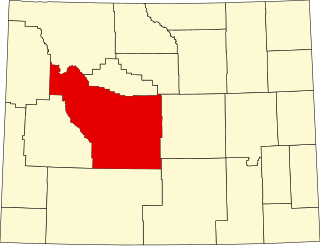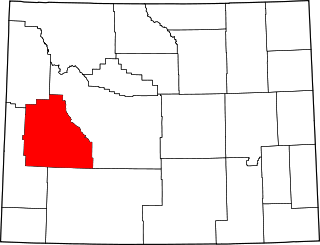There are 6 National Natural Landmarks in Wyoming. Three are canyons, one is a depression, one is a cliff, and the last is a stream that divides and flows into two oceans.
| Name | Image | Date | Location | County | Ownership | Description |
|---|---|---|---|---|---|---|
| The Big Hollow | November 1980 | Laramie 41°18′48″N105°43′17″W / 41.313209°N 105.721307°W | Albany | federal, private | A large wind eroded deflection basin. | |
| Como Bluff |  | May 1966, November 1973 | Rock River 41°52′53″N106°04′34″W / 41.881384°N 106.076217°W | Albany | federal, state, private | A ridge noted for multiple significant fossil discoveries from the late Jurassic of the Mesozoic Era. |
| Crooked Creek Natural Area | 1966 | Big Horn | federal (Bighorn National Forest) | A rich source of fossils of Early Cretaceous land vertebrates. | ||
| Red Canyon | | November 1980 | Lander 42°40′20″N108°39′29″W / 42.672087°N 108.658175°W | Fremont | federal, state, private | A canyon exposing a number of sedimentary formations as well as 10,000 years of human habitation. |
| Sand Creek |  | December 1984 | 40°59′49″N105°46′14″W / 40.99694°N 105.77056°W | Albany | federal, state, private | The most spectacular examples of cross-bedded sandstone and "topple blocks" in North America. NNL area extends across Colorado border. |
| Two Ocean Pass | October 1965 | Teton Wilderness 44°02′35″N110°10′30″W / 44.04293°N 110.17495°W | Teton | federal (Bridger-Teton National Forest) | A pass located on the continental divide. Here, at a place called Parting of the Waters, North Two Ocean Creek splits into its two distributaries which form the headwaters of Pacific Creek and Atlantic Creek. Waters from these two creeks ultimately flow the Pacific and Atlantic ocean drainages, respectively. | |













